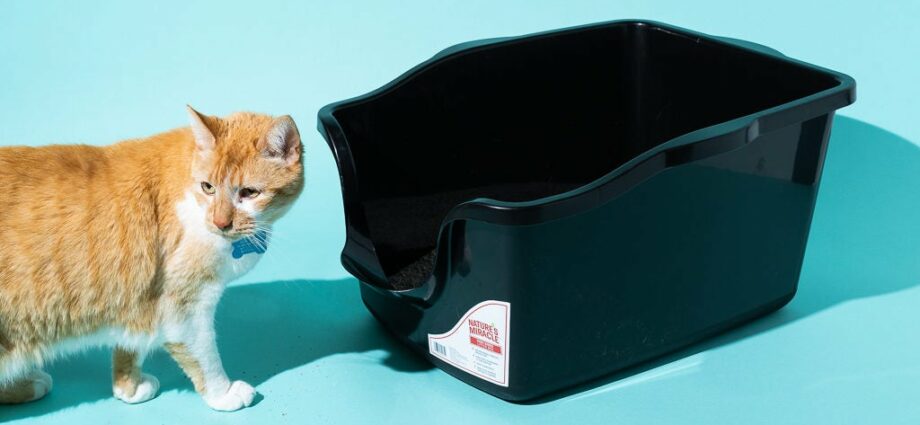Contents
Litter box: which one to choose and how to take care of it?
When adopting a cat, it is usually necessary to acquire a litter box. However, faced with the different types of containers available on the market, it is difficult to make a choice. The questions then arise as to the substrate to be placed at the bottom (the litter grains) and the frequency of cleaning. Here are some answers to provide satisfactory elimination conditions for our feline companions.
Which litter box to choose?
First of all, it should be remembered that it is unnatural for a cat to defecate and urinate in a box. In order to limit the frustration that can engender the use of litter boxes, indoors, it is necessary to take an interest in our cat’s preferences. On the one hand, several studies show that the size of the litter box is important and that cats prefer to use large litter boxes. A certain depth also seems to be appreciated for the droppings.
On the other hand, there are two different models of litter: open or closed litter. It was generally accepted that cats preferred open litter boxes. However, a study shows that there are rather individual preferences for one or the other type of tank, without a general trend applicable to all cats. It is therefore up to each owner to identify their cat’s preference.
In order to prevent uncleanliness, it is often necessary, however, to ensure that the cat is not afraid of the cover, and especially of the hinged door usually present on closed litter boxes. Gradual habituation work can be done in this case.
Where to put the litter?
First of all, in order to organize the most cat friendly environment possible, it is recommended to have as many litter boxes as there are cats, plus an additional litter box. It is the rule of n + 1 where n is the number of cats in the household. For example, if you have 2 cats, it is recommended to provide them with 3 litter boxes. It is possible to vary the types of litter (open or closed) to give cats the choice to use the ones they prefer.
Then, the location of the litter box seems to play a significant role in the attractiveness of the litter box to the cat. Rather isolated locations, out of sight and out of sight, are generally recommended. However, in the event of refusal to use a litter box, it can be moved to adapt to each cat.
Which substrate to choose for the litter?
The quality of the litter substrate is essential to recreate the natural elimination behavior of the cat. All commercially available substrates can scrape and bury excrement. However, their quality and in particular their ability to pick up odors vary. Several studies seem to indicate a preference of cats for litters made up of clumping grains and particularly for litters treated with charcoal rather than single litters or treated with baking soda. The use of “zero odor” spray for litter would reduce the manifestations of aversion to litter in cats.
In addition, some litters are scented. On this point, the most recent studies have not shown any preference, in cats, between this type of litter and unscented litter.
How often should I clean my cat’s litter box?
It is proven that cats prefer to use a clean litter box. You will probably have observed your cat going to the litter box right after cleaning it. This behavior would not only be linked to the odors emanating from the droppings present in the box and it is therefore recommended to remove them daily so that the cat does not see them accumulate in the litter box. Finally, removing the stools and piles of urine-contaminated litter is not enough and it is necessary to completely empty the litter to clean the box on a regular basis. The pace of this cleaning depends on the size of the tank and the requirements of each cat. One tip to limit unclean accidents is to clean the litter box with a bleach because the odor attracts cats and stimulates their elimination behavior.
At home, you can observe your cat and identify certain behaviors indicating a lack of satisfaction with the litter boxes offered. Indeed, these signs are probably signs of frustration:
- scratching around the litter box or the bottom walls, for long minutes, before or after urination and defecation;
- take a long time to urinate (period considered normal 20 seconds);
- enter the litter to come out immediately;
- being hesitant to enter the litter box;
- return to the litter box often to smell the feces;
- moving around during urination or defecation;
- urinate or defecate out of the litter box.
In these cases, changes can be proposed to limit this frustration:
- change of substrate;
- increased frequency of cleaning;
- displacement of litter;
- adding extra bedding;
- etc.
What should you know about the litter / cat relationship?
In conclusion, there are many factors that affect cats’ relationship with their litter box. If certain preferences seem to concern all cats (the dimensions of the tank, in particular), others vary according to the individuals. Observing your cat therefore remains the key to ensuring optimal comfort. Finally, it is important to note that urinary disorders such as going back and forth to the litter box or being unclean and having trouble defecating can be a sign of illness. The veterinarian remains your privileged interlocutor in the event of an anomaly.










